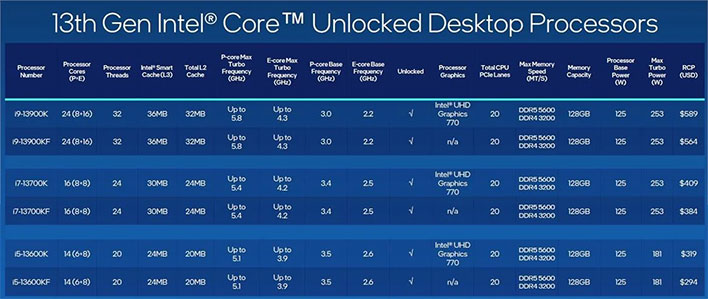Intel Upbeat As It Enters Aggressive Cost-Cutting Mode Amid Deteriorating PC Demand

A lot of companies would be pleased as punch to generate $13.5 billion in any given three-month period. But there's only one Intel, and that figure represents a 20 percent year-over-year decline in third-quarter revenue, which the company attributed to a challenging economy and weakening PC demand as the world recovers from a pandemic. As such, it's now looking at several cost-cutting measures, including layoffs.
At the same time, Intel is upbeat about the path it is on and the future of the chip industry, as well as how it's positioned for growth.
"Despite the worsening economic conditions, we delivered solid results and made significant progress with our
product and process execution during the quarter," Intel CEO Pat Gelsinger said in a statement. "To position ourselves for this
business cycle, we are aggressively addressing costs and driving efficiencies across the business to accelerate our
IDM 2.0 flywheel for the digital future."
Rough quarter notwithstanding, Intel still raked in a $1 billion profit, albeit that's down 85 percent from the same quarter a year ago. It also saw a bit of growth in some of its groups, including Network and Edge (NEX, up 14 percent to $2,3 billion), Accelerate Computing Systems and Graphics (AGX, up 8 percent to $185 million), and Mobileye (up 38 percent to $450 million).
Meanwhile, Intel Foundry Services (IFS) declined 2 percent to $171 million, Client Computing Group (CCG) slid 17 percent to $8.1 billion, and Datacenter and AI Group (DCAI) fell 27 percent to $4.2 billion.
"While we are not satisfied with our results, we remain laser-focused on controlling what we can
and we are pleased that our PC share stabilized in Q2 and is now showing meaningful
improvement in Q3. Our server share, while not where we want it to be, is tracking inline with our
expectations and we are encouraged by good execution in the quarter against our product
roadmap," Gelsinger added.
Gelsinger also specifically referenced "further deterioration in consumer PC demand" last quarter, adding that "enterprise demand has begun to slow" as well. Looking ahead, he expects "PC units to decline mid-to-high teens" to around 295 million units for the full year.
All that said, from Gelsinger's vantage point, "PC usage remains strong." And from a product standpoint, Intel had a "busy quarter" with the launch of its Raptor Lake architecture building on the momentum of Alder Lake, and the Arc A770 GPU rollout "giving our graphics efforts a strong boost."
"As we stated during Q2 earnings, we have an obligation to our
owners to be good stewards of your capital. We are responding to the current environment by
taking aggressive actions to reduce costs across cost of goods sold and operating expenses while
mindfully protecting the investments needed to accelerate our transformation and ensure we are
well positioned for long-term market growth," Gelsinger said.
What that ultimately entails remains to be seen, though Intel's roadmap is intact. Intel noted that its Intel 4 node is progressing towards volume manufacturing with tape out production of Meteor Lake on track for Q4. Intel 3 also "remains on schedule." Notably, Intel 3 and 4 are the first nodes deploying EUV.
Intel's latest earnings report projects Q4 will deliver between $14 billion to $15 billion in revenue, with full-year revenue settling in between $63 billion and $64 billion.


